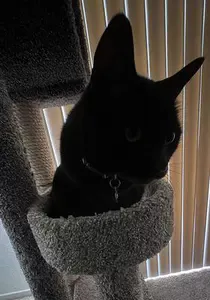Cat Health Insurance: When it Pays (and When it Doesn't)
Cat health insurance is an increasingly popular purchasing decision for pet owners.
As veterinary care costs rise, cat owners (and dog owners as well) are more and more looking into alternatives to the increasingly high cost of pet medical care. One of those options is to buy an insurance policy.
Below, we'll weigh the pros and cons of having (or not having) a cat health insurance plan. Simply put, if you don't have a policy, you'll have to cover the total veterinary costs over the life of your cat.
Is cat insurance worth it? To answer that, I asked myself...
When Does a Cat Health Insurance Plan Make Sense?
I regularly hear from people who don't have an insurance plan, and can't pay their vet bills.
Often, these people have been hit with an unexpected bill for tests or treatment for a cat with a disease, such as cancer, or their cat has been injured in an accident.
These bills can be in the thousands of dollars. With nothing to convert into cash, and without insurance to cover the costs, they go in search of raising funds.
Getting insurance makes sense, if you:
- can cover the monthly premium
- have no assets you can turn into cash
- don't have a rainy day credit card
Is your cat at high risk?
If you have a cat that is at higher risk for disease or injury, your veterinary costs will obviously be higher. In these cases, purchasing cat insurance probably makes sense.
Those at higher risk include:
- An outdoor cat
- An older cat
- A cat with a previous history of health problems
Routine care or catastrophic?
If you're concerned about regular cat care costs, you can choose to include a routine care feature in your plan and your premiums. If you're simply concerned about catastrophic or emergency type care, you can choose that type of plan. With all of the different plans available, there should be a plan that fits your situation.
My No Insurance Story
One of my cats was diagnosed with a heart condition, and I did not carry insurance for her at the time. The day Priscilla was supposed to go to the vet for a teeth cleaning, she fell off the couch.
The diagnosis? It turns out that she had developed a heart murmur, and could not undergo the cleaning procedure.
Later, after a specialist consultation and some expensive testing, she was diagnosed with a serious degenerative heart condition known as feline hypertrophic cardiomyopathy.
There was no cure for her condition, and the medication she needed was not made for cats. It had to be prepared specially and come from a pharmacy that was willing to make it up for me.
All of these costs came out of my pocket, and were obviously unexpected. Having pet insurance coverage would have been a big burden off of me.
Through each step of the process, my veterinarian kept saying that we could stop if the costs were too high. I told him that I didn't care about the cost, only about the cat!
Luckily for me, I was earning a good living at the time, and had the means to pay.
My vet explained to me that without insurance, many of his patient's families can't afford to pay for these types of costs for their animals, and so never pursue diagnosis and treatment.
But Still, There are Reasons Not to Buy a Plan
If you have young, healthy indoor-only cats, and plenty of cash, or a rainy day credit card you don't mind using for emergencies, an insurance plan makes less sense.
In some cases, it may not make sense to purchase a plan that covers routine care. Instead, a more cost effective method would be to buy a policy that covers only the unexpected costs that may arise.
Other considerations:
Be aware that if you do buy a plan, there may be some age and breed restrictions. Check with the particular insurance company you've chosen to see if your pet is eligible. As with most insurance policies, there may be a grace period where you can't collect on the policy, as well as some exclusions you should know about.
For example, some companies require you keep up with annual vet visits and vaccinations. Check with the company providing your coverage to ensure you comply with whatever their policies might be.
What to Look For
As the need for cat insurance products expands, more companies will enter the market. In addition, both new and existing companies will continue to improve their products and offer more flexible and comprehensive policies.
In addition to other benefits discussed, some pet insurance companies offer:
- 100% coverage
- no physical exam requirement
- no annual maximum benefit restrictions
- spay and neuter procedures
- guaranteed acceptance
- routine care, such as vaccinations and flea medication
- dental coverage
As you review companies and what the plans cover, keep in mind which of these are important to you.
Below are a some of the current best offerings from some of the top companies offering plans for cats.
Cat Health Insurance: US Companies
Here are a number of companies that offer plans in different countries. We'll also look at some self-insuring options as well.
These companies offer pet insurance to customers in the US.
Veterinary Pet Insurance which offers two major medical plans.
Embrace Pet Insurance which offers highly customizable plans including coverage for pet medication.
Quick Care Pet Insurance which offers flexible plans with varying levels of coverage and deductibles.
Cat Health Insurance: UK Companies
These companies offer pet insurance to customers in the UK:
More Than
More Than pet insurance will cover older cats, and coverage includes alternative therapies such as acupuncture and homeopathy. Their policies also include advertising and reward money if your pet gets lost, boarding fees if you are hospitalized, and bereavement counseling should you need it. More Than gives you a Personal Customer Manager to work with by phone or email.
Pet Protect
Pet Protect has been offering pet insurance in the UK since 1983. One of the ways they differentiate themselves from other companies is that all of their policies are lifelong. This means that as long as you renew your policy, they will keep paying for treatment up to the benefit amount each year.
With other companies, you might run out of benefits at the end of 12 months, or when the financial limit was reached. This makes this type of policy good for chronic or catastrophic conditions. The also pay 50 percent for vet prescribed diets (not weight loss related).
Alternatives to Buying Cat Health Insurance
While buying a full-featured policy can be a good financial move, there are alternatives. Possible alternatives to buying full-featured insurance policies include:
- become self insured
- buy a plan you can customize
- buy a discount plan
Become Self-Insured
There are two ways you can cut down on your insurance policy costs and still pay for your cat's medical expenses. The first method is to become fully self-insured where you cover the whole cost of your cat's health care yourself.
The second is to buy a cheap policy that covers part of the cost, and cover the rest of the cost yourself.
- Set up a savings and investment plan to pay for vet bills. Get a low interest rate credit card and hold on to it for emergency use only.
If you encounter unexpected veterinary care costs, you can use the credit card to pay for it, and use your income or equity from your investment plan to pay off the card. This will cover at least some of the bills. - Buy a lower cost policy and use a low interest rate credit card for emergencies. Instead of buying a full-featured policy that would be more expensive, buy a cheap policy that offers lower coverage. Use the credit card to make up the difference in the cat insurance coverage when needed.
Customized and Discount Plans
Embrace Pet Insurance
Embrace offers pet insurance plans that you can totally customize. You can essentially piece together a policy that suits your needs, and pay more or less depending upon the options you choose.
By allowing you the flexibility to choose the details of your plan, you can lower your premium costs and not pay for coverage you never plan to use. You can even choose different options for each pet in the house.
Some of the options you can choose are:
- different maximums for each pet
- different deductibles for each pet
- optional coverage
- copay percentage
- prescription drug
- dental coverage
- continuing care for chronic illnesses
In addition, there are no maximum annual benefit restrictions like some plans have. Their plans also offer unlimited lifetime accident coverage, $60,000 of lifetime illness coverage for cats, and your premiums and deductibles don't increase as your pet ages.
Pet Assure
Pet Assure is not insurance, but a discount plan for cat health care. Participating veterinarians give you a discount right at the time of service, so there are no forms to fill out or waiting for claims.
Related Topics
The Cat Illness Symptoms Guide
More than 70 cat illness symptoms and signs


Comments: What do you think?
Have your say about what you just read. Leave me a comment in the box below.